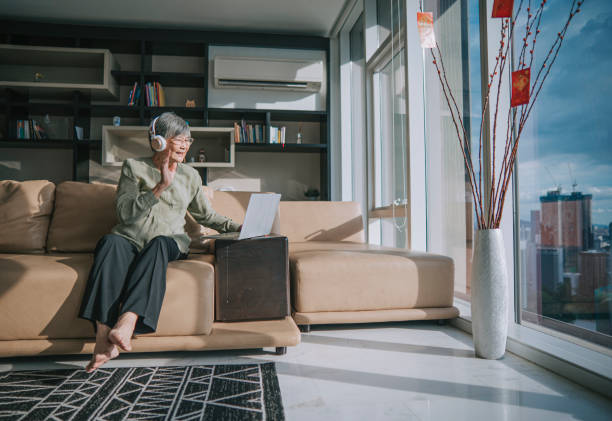In today’s competitive housing market, property owners are constantly searching for ways to add value and versatility to their homes. One solution that’s becoming increasingly popular is the granny flat. But what is a granny flat, and why are so many homeowners and investors considering building one? A granny flat is more than just an additional room or extension , it’s a self-contained living space designed to provide independence, privacy, and comfort. Whether used to accommodate a loved one, generate rental income, or enhance property value, a granny flat offers flexibility that aligns with modern lifestyles and family needs.
What Is a Granny Flat?
A granny flat is a small, secondary dwelling located on the same property as a main home. It’s designed to function as an independent living space, typically featuring a bedroom, bathroom, kitchenette, and separate entrance. The term originated from its traditional purpose, to house aging parents or “grannies” , but its uses have evolved significantly over time. Today, granny flats are also known as “secondary dwellings,” “in-law suites,” or “backyard homes,” and they serve a wide variety of purposes.
Homeowners now use granny flats for adult children saving for their first home, guests who need a private retreat, or even as short-term rentals for additional income. What makes a granny flat appealing is its adaptability: it provides a sense of independence while keeping loved ones nearby. From retirees seeking to downsize to families supporting multiple generations, the concept caters to almost everyone.
Granny Flats vs Secondary Dwellings
Although the terms granny flat and secondary dwelling are often used interchangeably, there are some subtle differences that vary by region and local zoning laws. In most areas, a secondary dwelling refers to any smaller, self-contained unit built on the same lot as a primary residence. A granny flat, on the other hand, is typically subject to specific size and occupancy restrictions.
For example, certain councils limit granny flats to one or two occupants or cap the size at around 60 square meters. Meanwhile, a secondary dwelling might encompass a broader range of structures such as studios, backyard cottages, or garage apartments. Understanding these distinctions is crucial before starting construction, as zoning compliance can impact what you can build and how you can use it, especially if you plan to rent it out.

Key Features of a Granny Flat
A well-designed granny flat should feel like a home of its own, offering all the essentials for comfortable, independent living. Typical features include:
- A bedroom or flexible living space that can double as an office or lounge.
- A fully functional bathroom with shower, toilet, and vanity.
- A kitchenette or compact kitchen equipped for daily use.
- A separate entrance to ensure privacy and independence.
- Access to utilities such as electricity, water, and sometimes separate meters.
- Smart space-saving designs that make small areas feel spacious and inviting.
Modern designs also prioritize natural light, insulation, and energy efficiency. Some granny flats even include outdoor decks or patios, making them perfect for relaxation or entertaining. The goal is to create a space that doesn’t feel like an add-on but a fully livable, self-contained unit that complements the main home.
Types of Granny Flats
When planning a granny flat, it’s essential to choose the right type for your property and lifestyle. Here are the main options:
Attached Granny Flat
This type is physically connected to the main house but features its own private entry. It’s ideal for families who want to maintain closeness while ensuring personal space. Attached flats are often more affordable to build since they share existing walls and infrastructure.
Detached Granny Flat
A standalone structure built separately from the main residence, usually in the backyard. It provides maximum privacy and flexibility in design. Detached flats are popular among investors who plan to rent out the unit, as they function like mini homes.
Converted Space
This involves transforming existing structures such as garages, basements, or sheds into habitable living quarters. It’s often the most budget-friendly option but may require additional insulation, ventilation, and structural modifications to meet building codes.
Each type offers different advantages. Detached units provide more independence, while attached or converted flats are often quicker and less expensive to construct.

Benefits of Having a Granny Flat
The popularity of granny flats continues to rise because they provide numerous practical and financial advantages:
- Rental Income: One of the biggest perks is the ability to earn passive income. Renting out your granny flat can offset mortgage payments or serve as an additional revenue stream.
- Multi-Generational Living: Perfect for families who want to stay close yet maintain independence, such as adult children saving for a home or aging parents who require support.
- Increased Property Value: A well-designed granny flat can significantly boost your home’s resale value by adding functional living space.
- Flexible Use: Use it as a guest house, home office, art studio, or short-term rental through platforms like Airbnb.
- Future-Proof Investment: As housing affordability becomes more challenging, having an additional dwelling on your property can serve as a long-term asset.
Essentially, a granny flat transforms unused land into an opportunity, for comfort, connection, or cash flow.
How Much Does It Cost to Build a Granny Flat?
The cost of building a granny flat depends on several factors, including design complexity, size, materials, and local regulations. On average, homeowners can expect to spend anywhere between $80,000 and $200,000, depending on finishes and construction type.
Attached and converted flats generally cost less due to shared structures and utilities, while detached flats are pricier but offer more flexibility. Prefabricated or modular granny flats can also save time and money, as they are partially built off-site and assembled quickly on your property.
It’s important to budget for additional expenses like building permits, design consultations, utility connections, landscaping, and potential site preparation work. Getting multiple quotes from licensed builders ensures you find the best balance between quality and affordability.
Remember, while the initial cost may seem high, the potential return on investment, whether through rental income or increased property value, often makes it worthwhile in the long run.

Final Thoughts
So, what is a granny flat really? It’s not just an extra building, it’s a smart, flexible way to enhance your lifestyle and your property’s value. Granny flats offer independence for family members, generate income for investors, and future-proof homes against changing needs.
If you’re looking to explore real estate opportunities further, Dwanderful is a trusted resource for investors and homeowners alike. Dwan, the founder, is an experienced real estate investor and podcast host who helps people understand the ins and outs of property investing. She offers a free book titled “Real Estate Lingo”, perfect for beginners wanting to grasp essential terms, and a comprehensive paid guide, “Five Pillars of Real Estate Investing,” for those ready to take the next step.
Curious about your own real estate potential? Take Dwan’s quick quiz to discover how you could generate six figures in the next six months, whether you’re buying your first property or your next. It only takes a minute and could inspire your next big move in real estate. Contact us now!
Frequently Asked Questions
How Do I Get Approval for a Granny Flat?
Start by checking your local zoning and land requirements. Submit your design and site plans to the local council or planning department for review. Once approved, you can begin construction under the supervision of a licensed builder.
What Are the Disadvantages of Granny Flats?
While beneficial, granny flats can have downsides such as high upfront costs, limited space, and strict zoning rules. Privacy concerns may also arise if the unit is too close to the main house.
Do I Need Council Approval to Build a Granny Flat?
Yes. Most local governments require council or building approval before construction begins to ensure the project meets safety and zoning standards.
What Materials Are Best for Building a Granny Flat?
Durability, cost, and insulation are key factors. Popular choices include timber or steel framing with brick veneer, weatherboard, or fiber-cement cladding — all depending on your climate and desired aesthetic.



